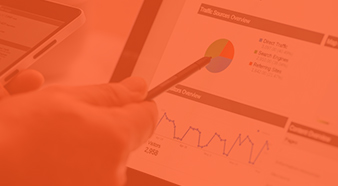As more businesses add Google Analytics to their website, it’s important for them to use the information to develop the marketing and usability of the site. One of the main criteria that should be set up and used within Analytics are ‘goals’ – these report on completed actions within the website and can tell a business how well their website is converting visitors to customers.
A ‘goal’ within Google Analytics describes the completion of an action on a website – whether it be the purchase of an item, the submission of an enquiry form, or the sign-up to a newsletter. Goal paths can be set-up within the Analytics profile settings, with 4 goals being tracked within a profile (and therefore if a website has more than 4 goals that need to be tracked, an additional profile needs to be created). The goal paths describe the stages that a site user needs to go through to reach the final goal, which is normally a ‘thank you’ page confirming a sale or other action on the website.
Once the goals have been set, the Analytics data allows site owners to review the information provided on the way that customers move towards the completion of these goals, following their steps, page-by-page through the site. A goal-tracking funnel within Analytics depicts where the website’s users may drop out of the goal path, showing the percentage conversions at each stage of the process. Therefore if a site has a shopping cart, it can be valuable to see where potential customers leave the process before completing an order. If there’s an enquiry form, a high drop-out rate may mean the form is asking for too much information and losing potential enquirers.
Armed with this type of data, the website owner can therefore make revisions to the website to try to increase the conversion rate through to the final goal. They can also compare the goal conversion rates from different referral sources (such as Google’s AdWords v organic search visits), as well as add generic or actual values to conversions, so that the ROI of the website and different marketing campaigns can be assessed.
This article was first published in the February 2009 edition of our monthly newsletter.
To find out more about Google Analytics and how you can use it effectively for your business, please get in touch for an initial, no obligation, discussion. Alternatively, if you are thinking of using website analytics for the first time, or have already started tracking your visitor data, we can provide you with a FREE analytics assessment to give you an idea of the key elements you should be tracking and reviewing to increase the performance of your website.



